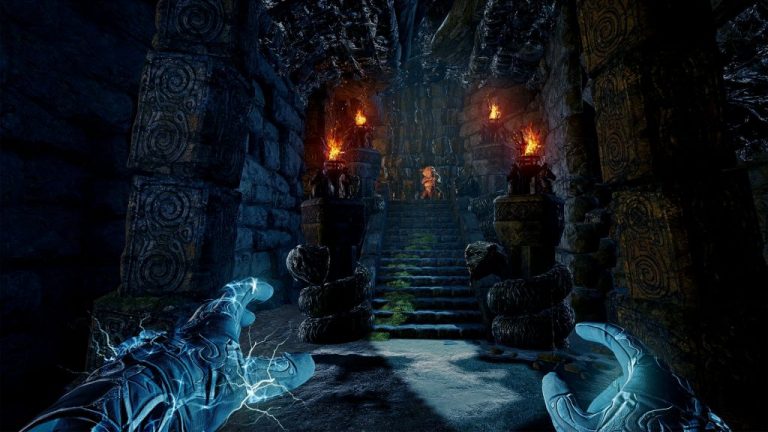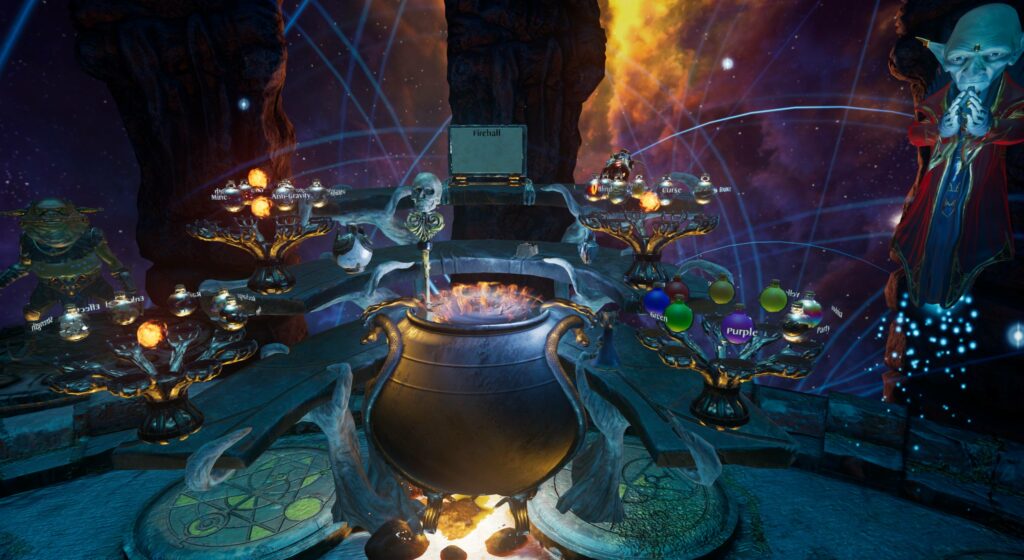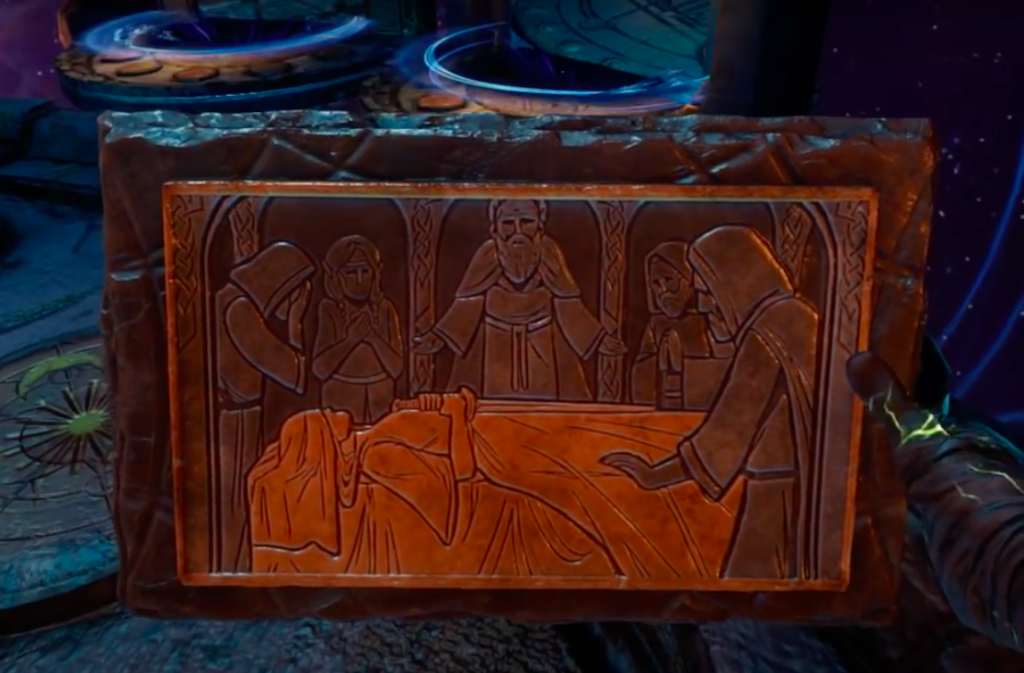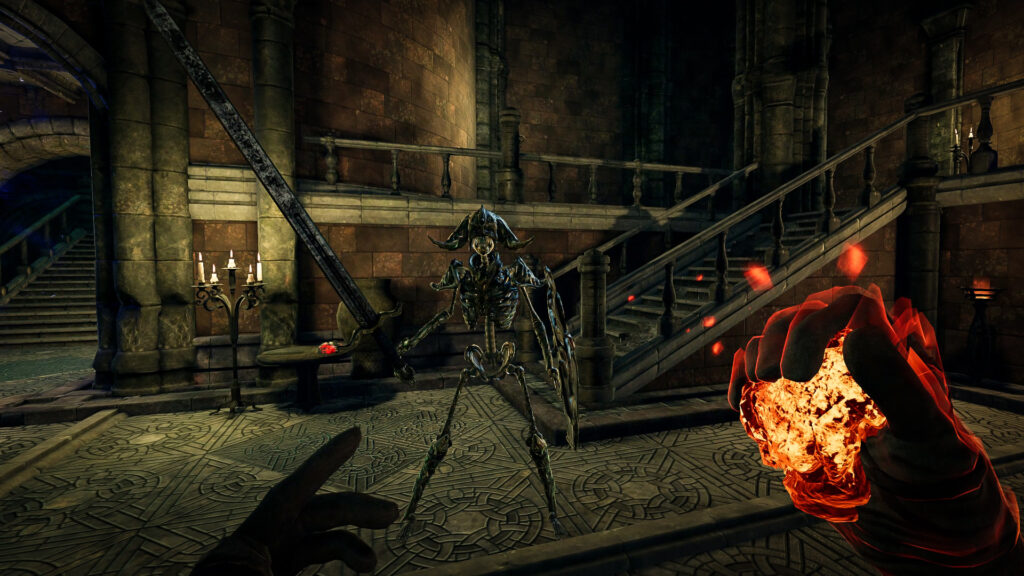Crafting A Virtual Tale
PROJECT OVERVIEW
By 2016 Puny Human had released three original titles (Galacide, Blade Symphony and Dystopia) and had just completed their first external project. The studio had built the confidence to start reaching out to the industry to see if there were more projects they could be of service to. The team was thrilled when the opportunity to work with inXile Entertainment was presented.
InXile Entertainment was founded in 2003 with a passion for RPGs, engaging stories and tactical gameplay. The studio was embarking on their next role playing title, only this time in virtual reality. The Mage’s Tale would become the first in a series of collaborations between the two studios.

The Mage’s Tale is a VR dungeon crawler that allows players to experience the immersive fantasy world of the Bard’s Tale series through the eyes of a wizard’s apprentice.
Player’s collect mystical ingredients while exploring dungeons, which can be used to craft hundreds of custom spells.
Puny Human was asked to help develop 3D models to build out the library of crafting components as well as assist with some of the game’s environmental assets and puzzles.
EXECUTING THE VISION
Puny Human’s artists used a list of brief ingredient descriptions and provided master materials to design and model 20 different crafting ingredients. Each material was contained in a glass jar and needed to be highly detailed as players would be able to hold them up and virtually investigate them from all angles.

The team also built a series of stone tablets that players would pick up and inspect. Each tablet had graphic stories carved into them that players would have to decipher as part of the dungeon’s puzzle mechanics.

Puny Human also contributed to the game’s environment by building some background assets, vegetation and a large underground tree pillar that served as a significant focal point.
The team relied on provided reference sheets to design the carved out tree trunk and intricate root system that protruded from the top and bottom of the pillar.
Puny Human’s artists used a combination of Z-Brush, Modo, Photoshop, Substance Painter, Substance Designer and UE4 to design and build the art assets.
CHALLENGES
Building upon the lessons learned from Time Machine VR, Puny Human was able to implement some process changes to streamline the collaboration process. This resulted in very few challenges during the work on The Mage’s Tale.

Puny Human was given full access to the game’s build which allowed the team to mirror the art style of the rest of the assets and test them in the same gameplay conditions the player would experience them.
The art team was used to building and using their own materials therefore had to adjust slightly to the process of relying entirely on a provided set of master materials but this did not result in any issues.
Communication and file sharing went extremely smoothly and the project was completed on time and within budget. Puny Human’s developers hadn’t had much experience with Substance Painter yet as it was fairly new to the industry. The project created a great opportunity to gain experience with the software which became a staple tool for future work.
OUTCOME
Mage’s Tale launched on PC, Playstation 4 and Oculus Rift. Upon release, The Mage’s Tale provided a more lengthy and in-depth experience in comparison to the VR exclusive titles of the time. Upload VR awarded The Mage’s Tale a “Great 8/10” score citing its “addictive spellcrafting system” as one of the main selling highlights of the game. The project opened the door for future services work with inXile Entertainment including Puny Human’s next project, The Bard’s Tale IV.



